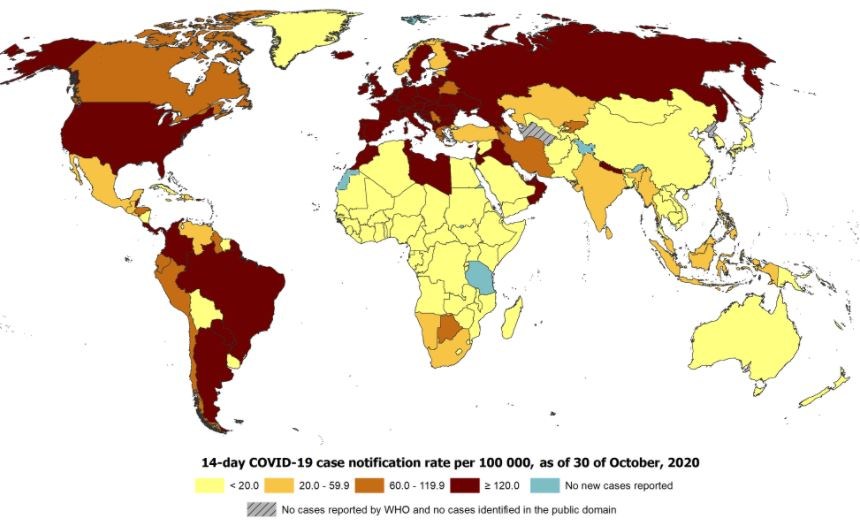Only four European countries have not turned red on the coronavirus map of the European Centre for Disease Prevention and Control (ECDC), following its latest update today.
Of the 31 countries in the ECDC rankings (EU, EEA and the UK), 27 are currently coloured red, meaning that they have passed the alarm threshold of 140 confirmed infections per 100,000 inhabitants over the last two weeks (dark read: over 240 cases).
According to the Council recommendation on a coordinated approach to the restriction of free movement in response to the COVID-19 pandemic, Member States should not restrict the free movement of persons travelling to or from another Member State’s areas classified as ‘green’. They should respect the differences in the epidemiological situation between orange and red areas and act in a proportionate manner.
Considering the wide range in the 14-day COVID case notifications, the Commission was asked at today's press briefing if the ECDC should not differentiate between levels of red. The chief Commission spokesperson replied that it would not make any difference as regards measures to be taken by the member states because the situation is severe in all countries coloured red.
Greece (108 cases/100,000 inhabitants) is dark orange, and Norway (58), Estonia (52) and Finland (47) are coloured light orange on the map.
Related News
- Covid-19: Belgium now Europe's hardest-hit country
- Over 1,000 Covid-19 patients admitted to intensive care in Belgium
- Belgian surrealism: Explaining regional measures once again
Belgium, with 1,600 confirmed infections per 100,000 inhabitants over the last two weeks, remains the worst-affected country, according to the ECDC.
In second place is the Czech Republic, with 1,512 confirmed infections per 100,000 inhabitants over the last two weeks. Completing the top five are Luxembourg (996), Slovenia (962) and Liechtenstein (805).
Belgium's neighbouring countries, the Netherlands (732) and France (706), are not far behind. Germany is a lot lower down on the list, with 182,1 confirmed infections per 100,000 inhabitants.
According to the Council recommendation, the map should also include data from Switzerland, "as soon as conditions allow", but they are still missing. Any explanation why data from the candidate countries in the Western Balkans and Turkey continue to be missing was not given at the press conference.
Maïthé Chini
The Brussels Times


